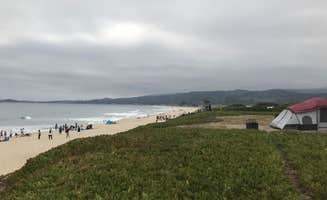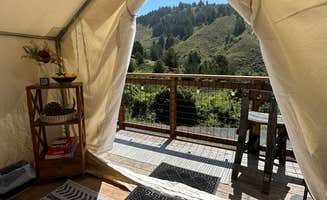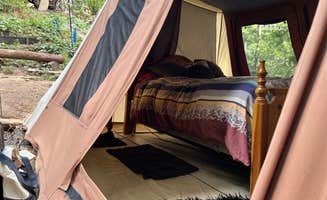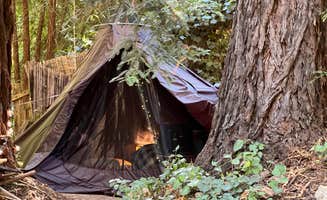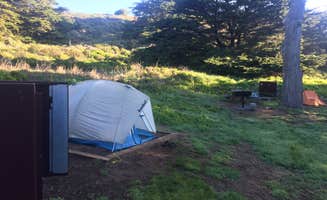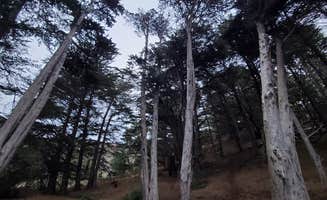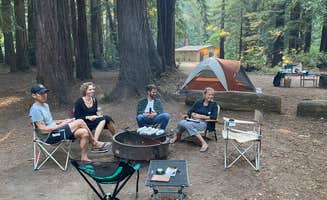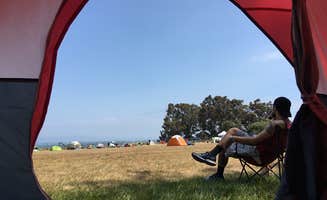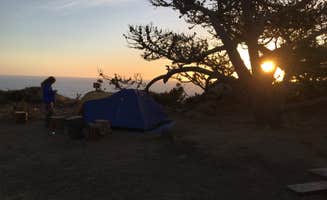Camping near Montara, California offers unique coastal experiences within a microclimate zone that receives approximately 30 inches of annual rainfall, primarily between November and March. The terrain combines forested hills with beach access points along Highway 1, creating distinct camping environments depending on which side of the highway you choose. Sites closer to the ocean generally experience temperature swings of 10-15 degrees between day and night.
What to do
Beach exploration: Visit Pelican Point RV Park, where campers report "a 5 minute walk to the beach" and mention seeing wildlife during coastal walks.
Hiking coastal trails: The Coastal Trail connects multiple camping locations, providing ocean views year-round. As one visitor to Pillar Point RV Park noted, there are "walking and bike trails, beach access, and friendly staff" all within walking distance.
Fishing opportunities: Several campsites provide access to local fishing spots. The marina area near Half Moon Bay RV Park gives campers options "to head about a quarter of a mile and walk or ride the coastal path all the way to the marina or south to the Ritz Carlton."
What campers like
Ocean proximity: Campers consistently mention the sound of waves as a highlight. At Francis Beach Campground, visitors appreciate that it's "quiet and right on the beach. Some RV spaces with hookups back right up to the sand/vegetation."
Walk-in tent sites: For those seeking more separation from RVs, specialized tent areas receive positive feedback. One camper described Francis Beach Campground's options: "beautiful walk in site (about 200 feet from car). other sites were crowded (more of a parking lot) but amazing location with access to beach."
Clean facilities: Many campsites maintain well-kept bathrooms and showers. A visitor to San Mateo Memorial Park highlighted that "the staff does an excellent job at keeping the place spotless and cleaning the bathrooms and showers."
What you should know
Campsite density varies significantly: While some locations offer privacy, many coastal sites position campers close together. One camper at San Francisco RV Resort observed, "These spaces were so cramped. Couldn't put our awning out... The neighbours slide was a foot from our door."
Reservation requirements: Most campgrounds in the area fill quickly, especially for weekends and summer. Sites with ocean views book fastest, often months in advance. The region follows California's ReserveCalifornia system with its 6-month booking window.
Weather patterns: Coastal fog is common year-round but especially from May to August. A visitor to Anthony Chabot Regional Park noted temperature differences: "The weather, though hot in the Bay Area at this point, was quite nice. The breeze and shade of the park made for a very comfortable setting."
Tips for camping with families
Look for educational opportunities: Several campgrounds offer junior ranger programs during summer months. Beaches provide tide pool exploration at low tide.
Consider inland options: When coastal campgrounds are full, drive 20 minutes inland for alternatives. A visitor to Memorial Park found it "Great for camping or just getting out for the day with family and friends" and mentioned it's "a super cool town. The Park was secluded and lots of shade."
Plan for temperature changes: Pack layers for all family members as temperatures fluctuate widely. Morning fog often burns off by midday, requiring both warm clothes and sun protection.
Tips from RVers
Size limitations: Most coastal RV sites accommodate vehicles under 40 feet. Larger rigs should call ahead to confirm access. A camper at Half Moon Bay RV Park mentioned, "Our site was a pull through as well as our friends who were able to face the opposite way to have a common camp side with us."
Hookup variations: Water and electric connections vary by campground, with some offering full hookups while others provide electric only. One RVer at Pillar Point RV Park recommended "hookups are pretty fast away and needed my sewer extention."
Consider wind exposure: Coastal sites experience strong ocean winds, particularly in afternoons. RVers should secure awnings and bring stabilizers, as Pacific winds can gust unexpectedly throughout the year.


